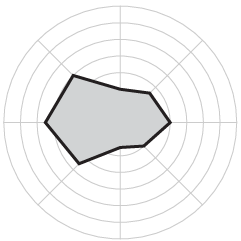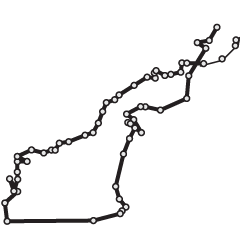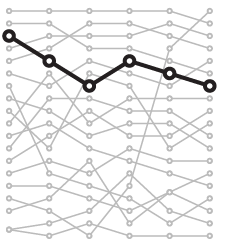Wilson Miner and Paul Smith, two co-founders of Everyblock, post tutorials and a little bit of their own experiences rolling out their own maps and creating graphs with web standards.
Why Not Go With Google Maps?
Paul gets into the mechanics of how you can use your own maps discussing the map stack – browser UI, tile cache, map server, and finally, the data. My favorite part though was his reasons for going with their own maps:
Ask yourself this question: why would you, as a website developer who controls all aspects of your site, from typography to layout, to color palette to photography, to UI functionality, allow a big, alien blob to be plopped down in the middle of your otherwise meticulously designed application? Think about it. You accept whatever colors, fonts, and map layers Google chooses for their map tiles. Sure, you try to rein it back in with custom markers and overlays, but at the root, the core component—the map itself—is out of your hands.
Because it’s so easy to put in Google Maps instead of make your own (although it is getting a little easier), everything starts to look and feel the same and we get stuck in this Google Maps-confined interaction funk. Don’t get me wrong. Google Maps does have its uses and it is a great application. I look up directions with it all the time, but we should also keep in mind that there’s more to mapping than bubble markers all in the color of the Google flag.
Remember: a little bit of design goes a long way.
Data Visualization with Web Standards
Wilson provides a tutorial for horizontal bar charts and sparklines with nothing but HTML and CSS. Why would you want to do this when you could use some fancy graphing API? Using Everyblock as an example, data visualization can serve as part of a navigation system as opposed to a standalone graphic:

Sometimes the visualization isn’t at the center of attention.
Make sure you check out Everyblock, a site that is all about the data in your very own neighborhood, to see these maps and graphs in action.
[Thanks, Jodi]

 The more people who flock a story, the higher up the flock list the story goes. In the sidebar of each story is an interactive graphic that shows readers flocking around the news and stories getting highlighted. The larger the bubble, the more people who have flocked it; story bubbles light up orange when someone flocks it. The site isn’t showing any larger sizes, but a full screen version could be fun. Maybe a screensaver.
The more people who flock a story, the higher up the flock list the story goes. In the sidebar of each story is an interactive graphic that shows readers flocking around the news and stories getting highlighted. The larger the bubble, the more people who have flocked it; story bubbles light up orange when someone flocks it. The site isn’t showing any larger sizes, but a full screen version could be fun. Maybe a screensaver.





 Patrick Ball, a human rights statistician,
Patrick Ball, a human rights statistician, 

 Visualize This: The FlowingData Guide to Design, Visualization, and Statistics
Visualize This: The FlowingData Guide to Design, Visualization, and Statistics










